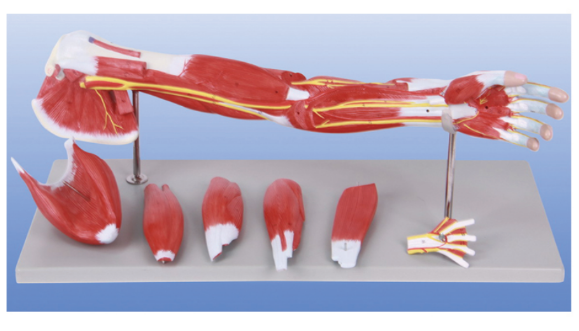Homepageпјҡ NEWS >> Upper Limb Muscle Anatomy Model: The key to unlocking upper limb strength
As an important part of the human motor system, the upper limb muscles not only support our daily activities, but also play a key role in power output, fine operation and so on. However, the structure and function of these muscles often appear complex and elusive to non-specialists. The emergence of the anatomical model of upper limb muscles provides us with an intuitive and three-dimensional learning platform, so that every detail of upper limb muscles can be clearly presented.
Through highly simulated design, the model accurately restores the shape, position and connection relationship of the upper limb muscles. From the deltoids and supraspinatus muscles of the shoulders, to the biceps and triceps of the arms, to the flexors and extensors of the forearms, each muscle group is meticulously delineated. This intuitive display not only helps us quickly identify and understand the structural features of the upper limb muscles, but also allows us to have a deeper understanding of muscle contraction, relaxation and mutual cooperation.

In anatomy education, the application value is particularly outstanding. It not only helps students quickly master the basics of upper limb muscles, but also deepens their understanding and memory of muscle function through interaction and practice. In rehabilitation training, the model also plays an important role. It can help rehabilitators accurately assess the patient's muscle condition, develop a personalized rehabilitation plan, and restore the patient's upper limb function through simulated training.
In addition, it has a wide range of application prospects in sports science research. Through the in-depth study and analysis of the model, we can more accurately understand the action mechanism of the upper limb muscles in the process of exercise, and provide scientific basis for the training and competition of athletes. At the same time, the model can also be used in the prevention and rehabilitation of sports injuries, and provide strong support for reducing sports injuries and improving athletes' competitive level.
To sum up, the anatomical model of upper limb muscle has become the key to understanding the strength of upper limb with its unique advantages and wide application value. It can not only help us deeply understand the structure and function of the upper limb muscles, but also provide strong support for anatomy education, rehabilitation training and sports science research.